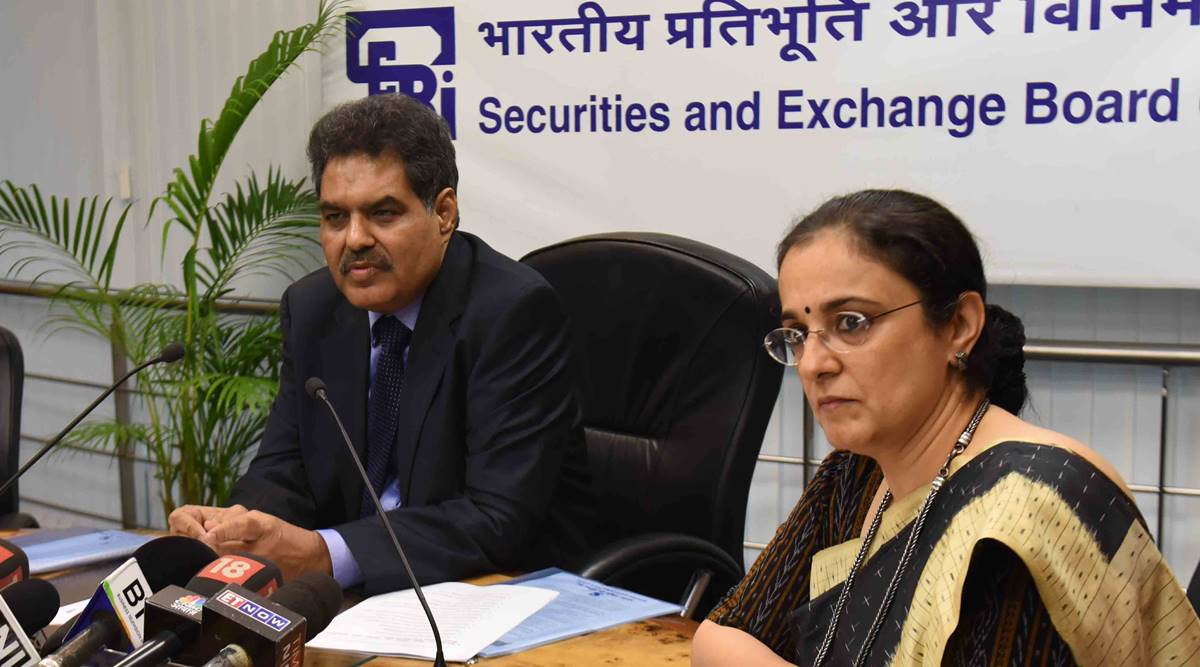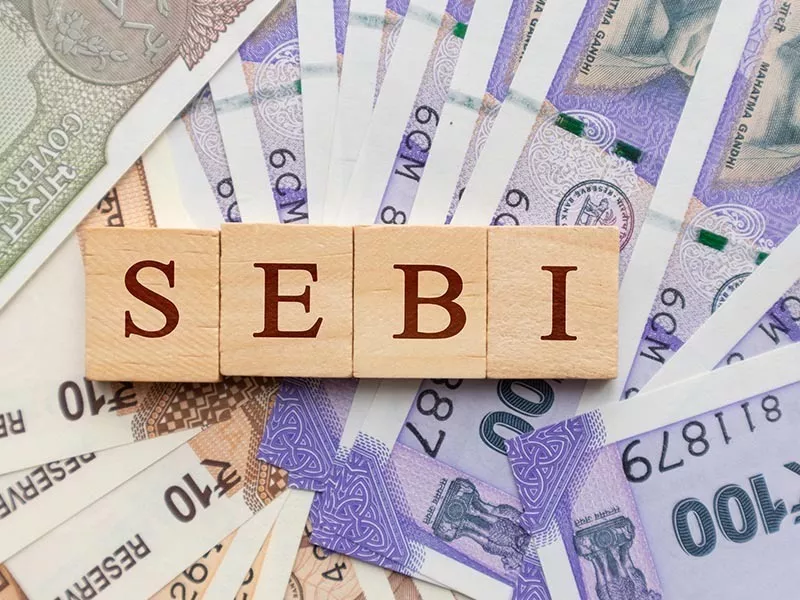
The Securities and Exchange Board of India, often referred to as SEBI is like a watchdog for the Indian financial markets. It was created in 1992 to protect regular people who invest in stocks and other financial products while also overseeing and regulating the functioning of stock exchanges and mutual funds. As a guardian of the Indian financial infrastructure. SEBI plays a crucial role in maintaining transparency, ensuring fair practices, and fostering investor confidence in the dynamic world of securities and investments.
In this blog, we will delve deeper into the functions and significance of SEBI in shaping India's financial sector.
History of SEBI
Before SEBI came into existence, the securities market was regulated by several government institutions, resulting in inconsistency and inefficiency. SEBI, the Securities and Exchange Board of India, emerged in 1992 to replace this disjointed regulatory landscape. In 2014, it gained sweeping authority to combat market manipulation and insider trading. Today, SEBI, headquartered in Mumbai's Bandra-Kurla Complex with regional offices across India, stands as a globally recognized regulatory authority shaping and safeguarding the Indian securities market.
SEBI is run by a board of directors, including a Chair who is elected by the Parliament, two officers from the Ministry of Finance, one member from the Reserve Bank of India, and five members who are also elected by the Parliament.
SEBI's Charter
 Source: Zee Business
Source: Zee Business
Madhabi Puri Buch is the current Chairperson of the securities regulatory body Securities and Exchange Board of India (SEBI). She is the first woman Chairperson to lead SEBI. According to SEBI's charter, SEBI is expected to be responsible for three main groups:
- The issuers of securities (the people who sell stocks)
- Investors (the people who buy them)
- Market intermediaries (those in between)
The body drafts regulations and statutes in a regulatory capacity, passes rulings & orders in a judicial capacity, conducts investigations, and imposes penalties in an enforcement capacity. As an example, the Board banned short-selling between 2001 and 2008.
Are you finding this article helpful from a competitive exam's point of view? Keep Reading!
Objectives of SEBI
 Source: Mint
Source: Mint
Following are some of the objectives of the SEBI:
1. Shielding investors: This is one of the most significant objectives of setting up SEBI, which includes safeguarding the interests of investors by providing guidance & ensuring that the investment done is safe.
2. Fighting tricksters- Preventing fraudulent practices and malpractices by tricksters that are related to trading and regulation of the activities of the stock exchange.
3. Good behaviour code- SEBI tells financial folks like brokers etc., how to play fair, like the referee of the money game.
4. Balancing act- To maintain a balance between statutory regulations & self-regulation.
Organizational Structure of SEBI
 Source: The Indian Express
Source: The Indian Express
SEBI in India operates within a structured framework akin to a corporation. It includes a Board of Directors, senior management, and various essential departments. In total, there are more than 20 departments, each overseen by department heads. These leaders are part of a hierarchical system which involves nine designated officers at various levels of authority:
- The Chairman – Nominated by the Indian Union Government.
- Two members belong to the Union Finance Ministry of India.
- One member belongs to the Reserve Bank of India or RBI.
- Other five members were nominated by the Union Government of India.
The below-mentioned list showcases some of the most important departments of SEBI –
- The Information Technology Department.
- The Foreign Portfolio Investors and Custodians.
- Office of International Affairs.
- National Institute of Securities Market.
- Investment Management Department.
- Commodity and Derivative Market Regulation Department.
- Human Resource Department.
Besides these, other crucial departments take care of legal, financial and enforcement-related affairs.
Functions of SEBI
 Source: RazorCube
Source: RazorCube
SEBI has the following functions
1. Protective Function
2. Regulatory Function
3. Development Function
The following functions will be discussed in detail:
Protective Function - Protector of Investors
-
Stopping Sneaky Trades (Insider Trading): SEBI makes sure that people who work inside a company don't secretly buy or sell their company's shares based on confidential information. This helps keep the stock market fair and prevents unfair advantages.
-
Check Price Rigging: SEBI watches out for suspicious and dishonest activities that manipulate stock prices in a harmful way. Price rigging is the act of causing unnatural fluctuations in the price of securities by either increasing or decreasing the market price of the stocks which results in unexpected losses for the investors.
-
Fair Play Enforcer: SEBI is like a decision maker in the financial game. It ensures that everyone follows the rules and doesn't engage in fraudulent activities. This keeps the financial market fair for everyone.
- Money Wisdom Guru: SEBI acts as a teacher for people who want to invest their money. It provides knowledge and guidance both online and offline to help investors understand how the market works and make informed decisions about their money.
Regulatory Function - Rule Setter
-
Rule Setter (Rulebook Creator): SEBI is like a rule maker. It creates a set of rules and guidelines for companies and financial intermediaries to follow. These rules are like a rulebook that tells them how they should behave and operate in the financial market.
-
Takeover Process Manager: When one company wants to buy or take over another company, SEBI helps manage and oversee this process. It ensures that the takeover happens fairly and according to the rules, so that no one takes unfair advantage of the situation.
-
Stock Exchange Inspector: SEBI acts like an inspector for stock exchanges. It checks if the stock exchanges are doing their job correctly. This means making sure that stock markets are fair, transparent, and safe for people to buy and sell stocks.
-
Oversees Broker: SEBI keeps an eye on stock and merchant brokers. These are the middlemen who help people buy and sell stocks. SEBI makes sure they follow the rules and act in the best interests of their clients so that people can trust them to make fair deals in the stock market.
Developmental Function - Market Builder
-
Teaching the Intermediaries: SEBI helps educate and train experts in the financial market. These experts could be stock traders, analysts, or others who work in the industry. SEBI ensures that they have the necessary knowledge and skills to do their jobs well.
-
Going Digital: SEBI encourages and facilitates stock trading to happen online through registered brokers. This means you can buy and sell stocks using your computer or phone, making it more convenient for people.
-
Cutting Costs: SEBI makes it optional for companies to go through a process called underwriting when they issue stocks. Underwriting can be expensive. SEBI's rule change means that companies can choose not to use this expensive process, which reduces the overall cost of issuing stocks. It's a way to save money for the companies.
Mutual Funds Guidelines of SEBI
 Source: Fisdom
Source: Fisdom
Mutual Fund Basics: In the world of Indian mutual funds, it's all about rules. First, they must register under the Trusts Act of 1882. Exclusive money market funds register with RBI. The Asset Management Companies (AMC) in charge must have SEBI's approval, and trustees keep a close watch to ensure compliance. SEBI's guidelines cover everything, from who can hold shares and voting rights to what goes into different types of funds.
SEBI's Mutual Fund Rules: SEBI lays down the law that no mutual fund sponsor, a group of a company or an associate of an AMC can hold more than 10% shares in an AMC or other fund. AMCs can't sit on other fund boards. For sectoral or thematic indices, no stock can be more than 35%. The top three index members can't have an aggregate weight of over 65%. Each index member must trade frequently, at least 80%. And liquid schemes? They keep at least 20% in safe, liquid assets. Every year, mutual funds follow SEBI's guidelines and share index details on their websites. This is the mutual fund rulebook in a nutshell.
Criticism of SEBI
Critics argue that SEBI can be a bit of a mystery, with limited public accountability. To keep its power in check, there are two protectors: the Securities Appellate Tribunal, with three judges, and the Supreme Court of India. They've scolded SEBI on many occasions. SEBI can be a tough enforcer, dishing out penalties and bold reforms. It even created the Financial Stability Board in 2009, a stronger protector than its predecessor, to safeguard financial stability in response to a global crisis.